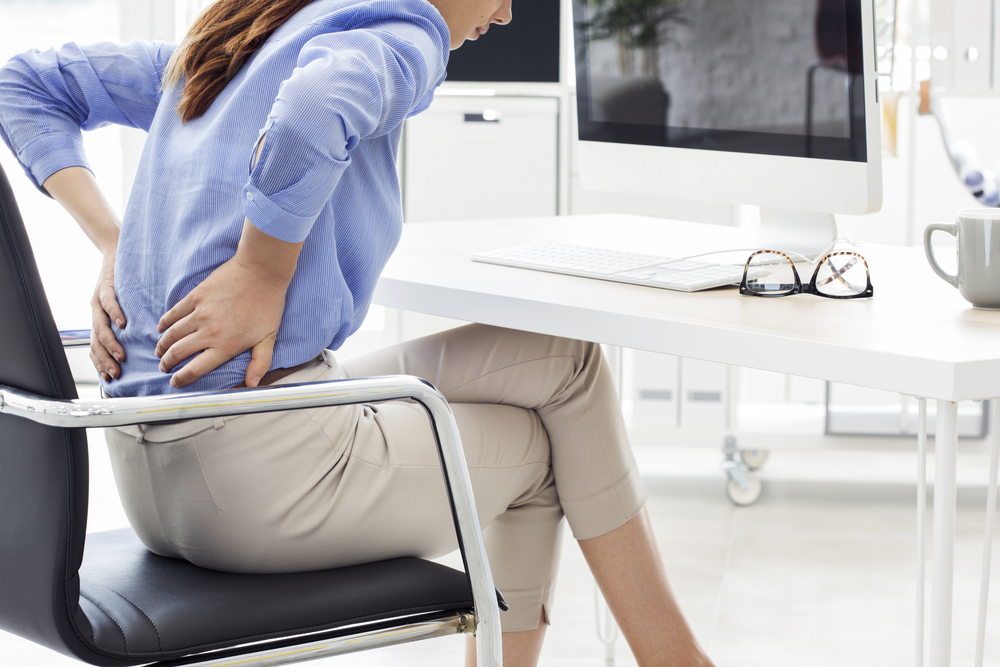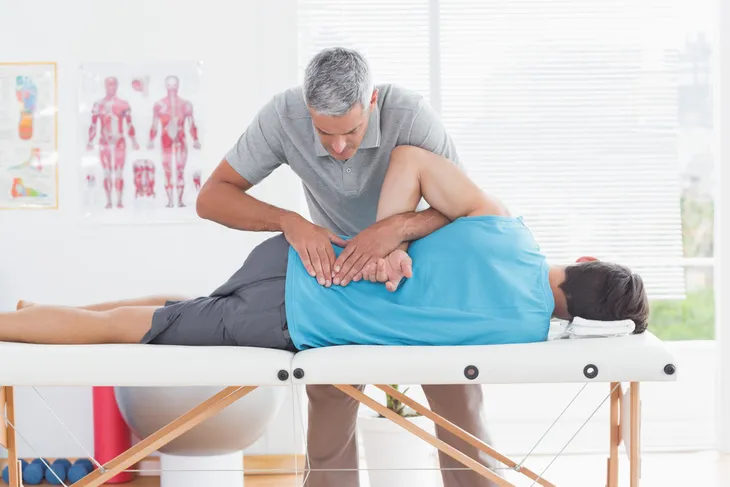You may have snickered a bit when you read the words “dead butt” in the headline, and that’s understandable. However, the truth is that dead butt syndrome – also less interestingly known as gluteal amnesia – affects many Americans. In fact, it might even affect you! You probably just didn’t know what to call it. The condition is characterized by an uncomfortable feeling in the – err – backside.
It’s caused by the muscles there not activating properly, notes Real Simple. “The gluteal muscle becomes neurologically inhibited and doesn’t activate when it should,” the source cites from a chiropractor. Here are more things to know about dead butt syndrome…
Symptoms Can Range
Healthline says that dead butt syndrome can feel like your behind is numb “or even a little sore” following long periods of time sitting in a chair. In these cases, the feeling may just be temporary and easily reversible, it adds.
However, the source also notes there’s a more serious version of dead butt syndrome that can affect more than what the name suggests. Pain can spread to your hips, lower back, and even your knees, it adds. You may also experience pain shooting down a leg. Inflammation of the hip bursa can also occur, which is painful, it adds.
It Can Extend Beyond The Butt
Aside from possible numbness, pain, and swelling, the symptoms of dead butt syndrome (we’ll refer to it as DBS from here on in) can affect how you walk. Healthline adds that the symptoms can lead to problems with your gait, which leads to pain in other places.
Specifically, it notes that pain the lower legs is common among DBS sufferers, because they might try to change their stride to reduce discomfort in your back or hips. Bu changing your walk, you put strain on other places that can make them ache too by sudden overuse, it adds.
Sitting On The Causes
The biggest trigger for DBS is sitting for long periods of time, notes Real Simple. However, this can strike both people with a sedentary lifestyle – that is, a person who isn’t active – to those who are typing away important documents on a computer at work all day.
The source says that adding to this is spending long periods of time commuting back and forth to that job, just to sit on your butt again all day. It’s also something that can affect commercial drivers, it adds.
Posture Can Be a Trigger
Unless you have someone beside you at all times (or train yourself to stay upright), you’re probably hunching over more than you think, especially by 3 p.m. on a Tuesday at the office.
While sitting for long periods of time is not a way to avoid DBS, Men’s Health says that poor posture can make it worse. It explains that when you’re slumped over, “you’re constantly in flexion,” creating a constant state of your glutes not engaging properly, it adds.
Active People Can Experience It Too
Healthline agrees that although DBS is common among people who don’t get off the couch often, it can also affect those that do. More specifically, it explains that people who have taken up running are at a particularly high risk of the condition.
It says runners can experience an episode of DBS if they spend most of their off-time sitting in front of a computer. The source also explains that distance running can be a culprit, as any strenuous exercises “can be too much for muscles and tendons that go long periods in the same positions.” It’s not just runners – dancers and other athletes can get it too, it adds.
How To Diagnose DBS
If you’re experiencing symptoms, it’s time to get off your butt and see a doctor. In all seriousness, DBS is not a pleasant condition, and a doctor or another health professional – most likely a sports medicine specialist or orthopedist – can help you sort out what’s going on, notes Healthline.
The doctor can check your symptoms and may ask you to move into different positions to see what muscles are affected, it adds. In some cases medical imaging may be ordered, but they’re only used to rule out other possible conditions, not confirm DBS, it adds.
A Pain In The Butt That Can Be Treated
If there’s a lucky side for those with DBS, it’s that it can be treated with non-invasive methods. Healthline explains that if you’re active, the key is to take a break from your activities and work with a sports medicine specialist if you’re hoping to bounce back quicker.
It adds that sufferers can follow the RICE rule – which is rest, ice, compression, and elevation. If the case is especially bad, the source notes that massage therapy can be especially useful, as well as physical therapy that includes strength and flexibility exercises.
Get Your Butt in Gear
Cleveland Clinic agrees that a deep-tissue massage may help the problem. But it also suggests a number of relatively simple exercises you can try to break the cycle of pain in your backside.
Examples include side-lying leg lifts, which involve doing 3-sets of 15-20 repetitions daily (make sure you do both sides). There’s also the clamshell, which involves lying down with knees bent, lifting the top leg toward the ceiling for 3-sets of 30-40 reps (alternate each side.) Shape also has some exercises to combat DBS including karate kicks, wide jump squats, and more.
How To Sidestep DBS
If you’re sitting at a desk all day, the best thing you can do is to remember not to sit for too long continuously, says the Cleveland Clinic. It suggests trying a sitting for 40-minutes, standing for 20-minutes approach – the latter that you can use to talk on the phone or visit with coworkers, it adds. A sitting/standing desk may be helpful to achieve this too.
Healthline adds to this by suggesting you set a timer on your phone to remind you to get up periodically to stimulate blood flow. It also urges you to take the stairs whenever you can, which will stretch the muscles affected by DBS and help you achieve a resistance/cardiovascular workout.












